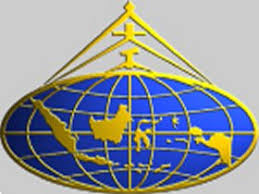 Di situs http://mediaengage.org/execute/mapping/index.cfm, terdapat tulisan mengenai membuat peta di Google Earth oleh Masyarakat. Karena saya yakin ini berguna maka saya copi tulisan itu.
Di situs http://mediaengage.org/execute/mapping/index.cfm, terdapat tulisan mengenai membuat peta di Google Earth oleh Masyarakat. Karena saya yakin ini berguna maka saya copi tulisan itu.Before you begin:
There are two steps that you need to take before you can map your community partners and connections with Google Earth.
First, download and install the Google Earth application on your computer. Second, find or create an Excel spreadsheet of your partners and their street addresses.
You will find links to download Google Earth and a spreadsheet template on our delicious site: http://delicious.com/ncoengage/map.
In this tutorial we’ll look at:
• Identifying and adding partner connections to your spreadsheet
• Mapping this information on Google Earth. We’ll add this information as layers on Google Earth. Layers consist of a group of partners that share a common characteristic or connection. By separating partner characteristics into layers, you control the amount of information and number of connections that are viewed at one time on your Google Earth map.
You can watch a companion video of this written tutorial at http://ncoengage.org/execute/mapping/
Step 1 - Determine the partner layer/characteristic to add to Google Earth.
The first step to creating your map is to add a new a new characteristic layer in Excel. For this tutorial, I’m using a spreadsheet that I’ve titled the Master Excel Sheet. It has community partners addresses already identified. You can find it in the zipped file of resources at http://ncoengage.org/execute/mapping/index.cfm.
I’m going to focus on mapping partners whose interests are in “The Arts”. Open the Master Excel Sheet that includes all of the partner data and scroll to the right until you reach an empty column. In the column heading type the label for the new layer/characteristic. In this case example, enter “The Arts”. Next determine which of the existing organizations have an arts focus and label them as such.
*Remember to Save your work.
Step 2 - Prepare the partner data for geocoding.
Select all of the partner data on the Excel sheet and choose “Data” from the menu. Then select “Sort” to sort your data by the new column heading “The Arts.” Click “OK”.
Step 3 – Open the geocoding tool.
Using your favorite Web browser, go to http://www.batchgeocode.com/
Go directly to Step #2 on this site and delete all of the data in the form box. The image below shows what the page looks like after you’ve deleted the data.
Step 4 – Add latitude and longitude coordinates to the partner data.
Return to the Excel sheet of partner organization data and select all of the organizations that you have labeled “The Arts”. Make sure to select all of the data related to “The Arts” partners including the column headers. Once it is selected, copy it to your clipboard.
Go back to the geocoding Web site and paste the data into the now empty form field in Step #2
Now move to Step #3 on the geocoder Web site and press the “Validate Source” button.
This will populate the form fields in Step #4 with the column headings from the partner Excel sheet.
Check that your data in Step #4 in the geocoder matches what the coding tool is looking for. You’ll do this by looking at the field names and the drop-down menu names.
The names of the fields do not have to match, but the data contained within them does. In the example below, the field matches the data although the names themselves don’t match exactly. This is fine.
Once you’re satisfied with the matches you’ve created in Step #4, click on “Run Geocoder” in Step #5. It will take a moment to process your data. The more partner organizations you have, the longer it will take.
Once the process is complete, scroll down to beneath the results map that is created and click on “Download to Google Earth (KML) File.” Download the file to the desktop of your computer.
Okay, now find the .KLM file on your computer desktop and rename it to match the layer you want displayed on Google Earth. In this example, name it “The Arts.klm”
Step 5 – Add the new layer to Google Earth
Open the Google Earth application on your computer. From the “File” menu, select “Open.” Find the “The Arts.klm” file on your desktop and click “Open”. You will see “The Arts.kml” appear in the “Places” window on Google Earth.
To change the icon for “The Arts” partner organizations displayed on Google Earth, right-click on “The Arts” layer and selecting “Properties”. A menu box will appear. Click on the icon to the right of the layer name to choose a new icon for “The Arts”.
You’re done!
You’ve added your first layer of partner information to our Google Earth map. To look at overlapping characteristics on your map, go back to Step 1 of this tutorial and create another layer. You can add and remove layers to display where your partners are in the community and the commonalities that exist between them.
Tulisan asli bisa anda lihat di/the original text http://mediaengage.org/execute/mapping/index.cfm ada gambar agar lebih mudah.
Klik Download written instructions on how to map your community using Google Earth. PDF or Word
Silahkan memberikan komentar anda mengenai tulisan disini, atau di boks dibawah tulisan ini, terima kasih.
GPS murah di sini, kontak: tracknavigate[at]yahoo[dot]com






























nice info gan.. terimakasih sudah disharing, jadi bertambah pengetahuan saya :) ditunggu sharing berikutnya :)
ReplyDeletethx infonya
ReplyDeleteGreat Blog..!!!! Keep Blogging.... :)
ReplyDeleteGreat Blog..!!!! Keep Blogging.... :)
ReplyDelete